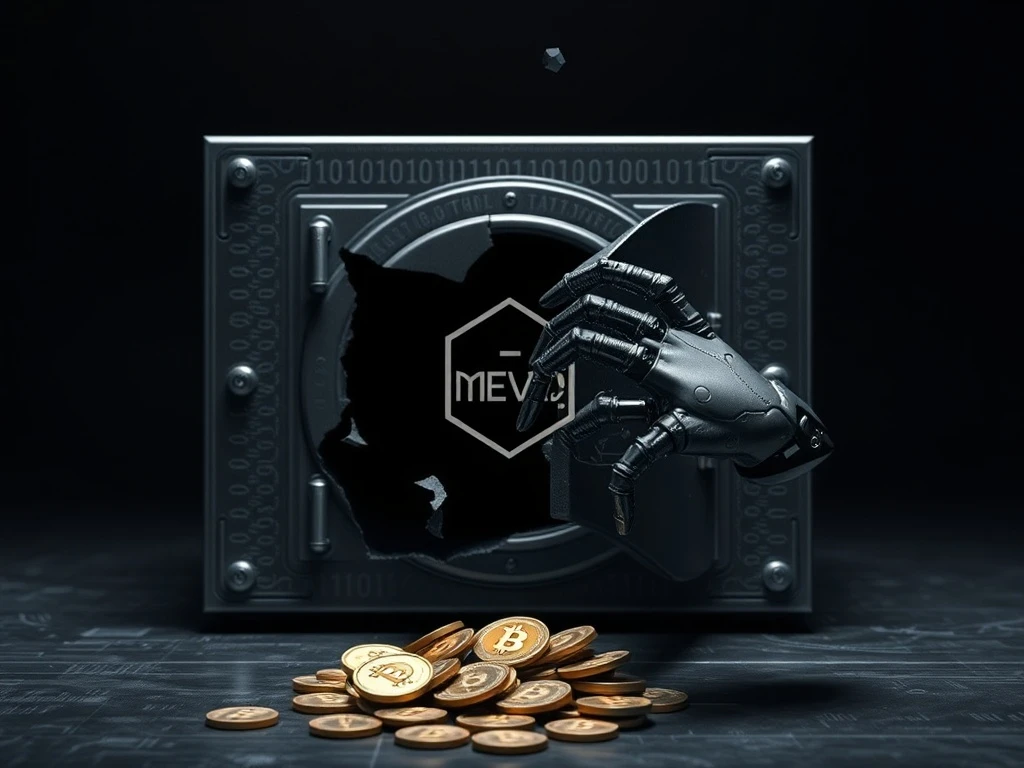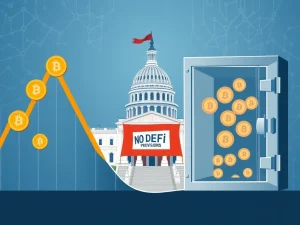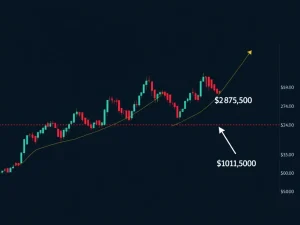Coinbase Blunder: $300K Crypto Loss in 0x Contract Error

A recent incident shook the crypto community. Coinbase, a leading cryptocurrency exchange, experienced a significant financial setback. The company lost approximately $300,000 in token fees. This unfortunate event stemmed from a critical error involving a 0x contract. A vigilant MEV bot quickly capitalized on the mistake. Consequently, it drained funds from a corporate wallet. This incident highlights ongoing security challenges within the decentralized finance (DeFi) ecosystem.
Unpacking the Coinbase Crypto Loss
On a recent Wednesday, Coinbase inadvertently approved assets to a 0x Project smart contract. This contract is known as a “swapper.” Security researcher Deebeez from Venn Network first flagged the incident. He detailed the sequence of events in a post on X. Specifically, Coinbase’s corporate wallet interacted with this swapper contract. The contract is a permissionless tool. It is designed solely to execute swaps. Crucially, it is not meant to receive token approvals. Granting approvals to such a contract can expose assets. This exposure can lead to immediate theft. Therefore, the mistake proved costly.
Screenshots shared by Deebeez illustrated the error. They showed Coinbase granting approvals for several tokens. These included Amp, MyOneProtocol, DEXTools, and Swell Network. Shortly after these approvals, an MEV bot became active. This bot called the swapper contract. It then transferred the approved tokens. The funds moved from Coinbase’s fee receiver account directly into the bot’s addresses. This swift action led to the substantial crypto loss. It served as a stark reminder of the precision required in blockchain transactions.
The MEV Bot’s Opportunity
The MEV bot involved in this incident was reportedly “lurking in the dark.” It patiently awaited an opportunity. Such bots constantly monitor blockchain transactions. They seek out specific conditions. In this case, the bot waited for users to mistakenly approve the vulnerable contract. Once the approval occurred, the bot could drain all associated funds. Deebeez noted that the bot’s “dream came true thanks to Coinbase.” Maximal Extractable Value (MEV) refers to the maximum value a block producer can extract from block production. They do this in addition to standard block rewards and gas fees. MEV is extracted by including, excluding, or reordering transactions within a block. Bots automate this process. They often engage in arbitrage, liquidations, or “sandwich attacks.” This incident exemplifies how MEV bots can exploit user errors, not just market inefficiencies.
Understanding Maximal Extractable Value (MEV)
- Definition: MEV is the profit block producers can make by reordering, censoring, or inserting transactions within a block.
- Bot Operations: MEV bots are automated programs. They scan pending transactions on the blockchain. They identify profitable opportunities.
- Common Strategies: These include arbitrage across decentralized exchanges, liquidating undercollateralized loans, and front-running/sandwiching user trades.
- Impact: While often associated with market efficiency, MEV can also lead to negative externalities like increased transaction costs or, as seen here, exploitation of user errors.
Understanding the 0x Contract Misstep
The core of this incident lies in the misuse of the 0x contract. The “swapper” contract is a permissionless tool. It facilitates token swaps. However, it lacks the necessary safeguards to securely hold approved tokens. This contract allows anyone to call it. They can perform arbitrary actions. Therefore, granting token approvals to it is inherently risky. This specific swapper contract has a history. It is known to have had issues with Zora claims on Base. Previous cases showed similar setups. Malicious actors could extract funds. These incidents did not involve exploiting code vulnerabilities. Instead, they leveraged improper user interactions or configurations. This reinforces the need for extreme caution when interacting with smart contracts, even seemingly benign ones.
The problem was not a flaw in the 0x protocol’s underlying code. Instead, it was a misconfiguration. Coinbase’s corporate wallet incorrectly granted approval. This allowed the swapper contract to spend certain tokens. A smart contract error of this nature can be particularly insidious. It does not involve a traditional hack. Rather, it exploits a logical flaw in how the contract is used. This makes it harder to detect without meticulous auditing of interaction patterns. Consequently, vigilance in wallet management is paramount.
Lessons from a Smart Contract Error
Coinbase Chief Security Officer Philip Martin confirmed the incident. He described it as an “isolated issue.” Martin attributed the problem to a configuration change. This change occurred in one of the exchange’s corporate DEX wallets. Importantly, he stated, “No customer funds were affected.” This distinction is crucial. It means the loss impacted Coinbase’s operational funds, not user deposits. Coinbase acted swiftly. The exchange revoked the token allowances. Furthermore, it moved remaining funds to a new corporate wallet. This quick response mitigated further damage. However, it served as an “expensive lesson” for the team, as noted by the security researcher.
This incident is not unique. In April, another MEV bot lost $180,000 in Ether (ETH). An attacker exploited a vulnerability in its access control system. The attacker swapped the bot’s ETH for a worthless token. This occurred via a malicious pool. In a similar event in 2023, a rogue validator exploited MEV bots. These bots were attempting “sandwich trades.” The validator stole $25 million in digital assets. These assets included WBTC, USDC, USDt, DAI, and WETH. Such events underscore the persistent security challenges in DeFi. They highlight the sophisticated nature of attacks. They also show the vulnerabilities that can arise from even minor configuration errors. Every smart contract error can lead to significant financial repercussions.
Mitigating Future Crypto Loss Risks
The Coinbase incident offers valuable insights. It emphasizes the importance of robust security protocols. Even major exchanges face risks. Constant vigilance is necessary. Users and institutions must exercise extreme caution. They should always verify smart contract interactions. Regularly reviewing and revoking token approvals is also vital. This prevents unauthorized access to funds. Furthermore, understanding the precise function of each smart contract is critical. Do not grant broad permissions to contracts not designed to hold assets. This incident reinforces the need for continuous education. It also calls for enhanced security audits. These measures help prevent future instances of significant crypto loss. The decentralized nature of blockchain technology demands a high level of personal responsibility. Ultimately, proactive security measures remain the best defense against emerging threats in the crypto landscape.









